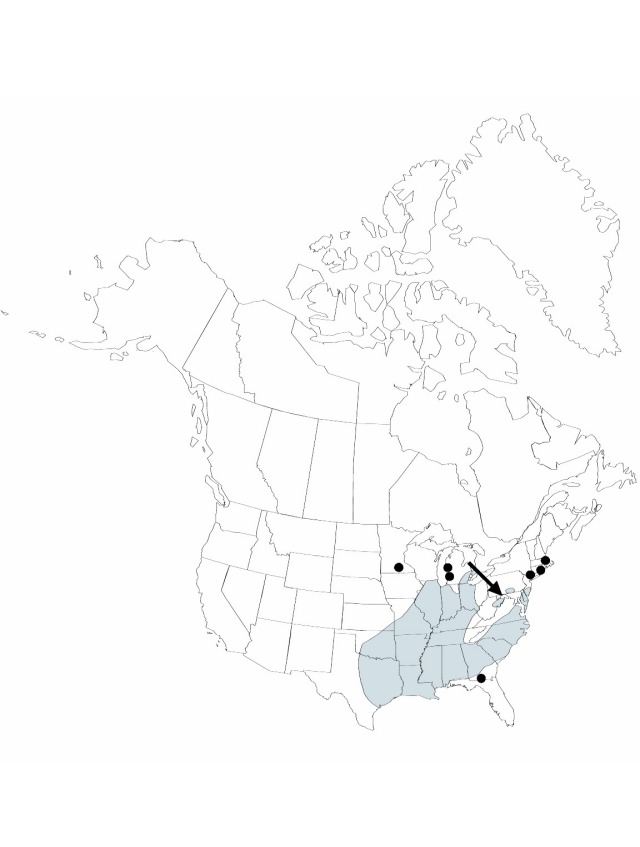Juncus brachycarpus
in A. Gray,Manual of Botany of the Northern United States (ed. 5) 542. 1867.
Herbs, perennial, not cespitose, rhizomatous, (3–) 4.5–8 (–9) dm. Rhizomes tuberous, 3–4 mm diam. Culms erect, terete, 2–3 mm diam., smooth. Cataphylls 0 (–1), straw-colored, apex acute. Leaves: basal 1–2, cauline 2–4, auricles 0.5–3.5 mm, apex rounded, scarious; blade green to straw-colored, terete, 3–50 cm × 1–2 mm diam. Inflorescences terminal panicles of 2–10 (–20) heads or a single head, 1–4 (–10) cm, branches ascending; primary bract erect; heads 30–100-flowered, spheric, 8–10 mm diam. Flowers: tepals green to straw-colored, often red-tinted, lanceolate-subulate, apex acuminate; outer tepals 2.5–3.8 mm; inner tepals 2–3.2 mm; stamens 3, anthers 1/4–1/2 filament length. Capsules included, chestnut-brown, 1-locular, obconic or ovoid, 1.8–2.7 mm, apex obtuse, valves separating at dehiscence, fertile throughout or only proximal to middle. Seeds ellipsoid to oblique-oblong, 0.3–0.4 mm, not tailed; cody clear to yellowbrown. 2n = 44.
Phenology: Fruiting mid summer–fall.
Habitat: Damp clayey, peaty, or sandy soils, swamps, ditches, ponds, wet woods, wet prairies
Elevation: 0–500 m
Distribution

Ont., Ala., Ark., Conn., Del., Fla., Ga., Ill., Ind., Kans., Ky., La., Md., Mass., Mich., Minn., Miss., Mo., N.J., N.Y., N.C., Ohio, Okla., Pa., S.C., Tenn., Tex., Va., W.Va.
Discussion
Selected References
None.
Lower Taxa
"dm" is not declared as a valid unit of measurement for this property.